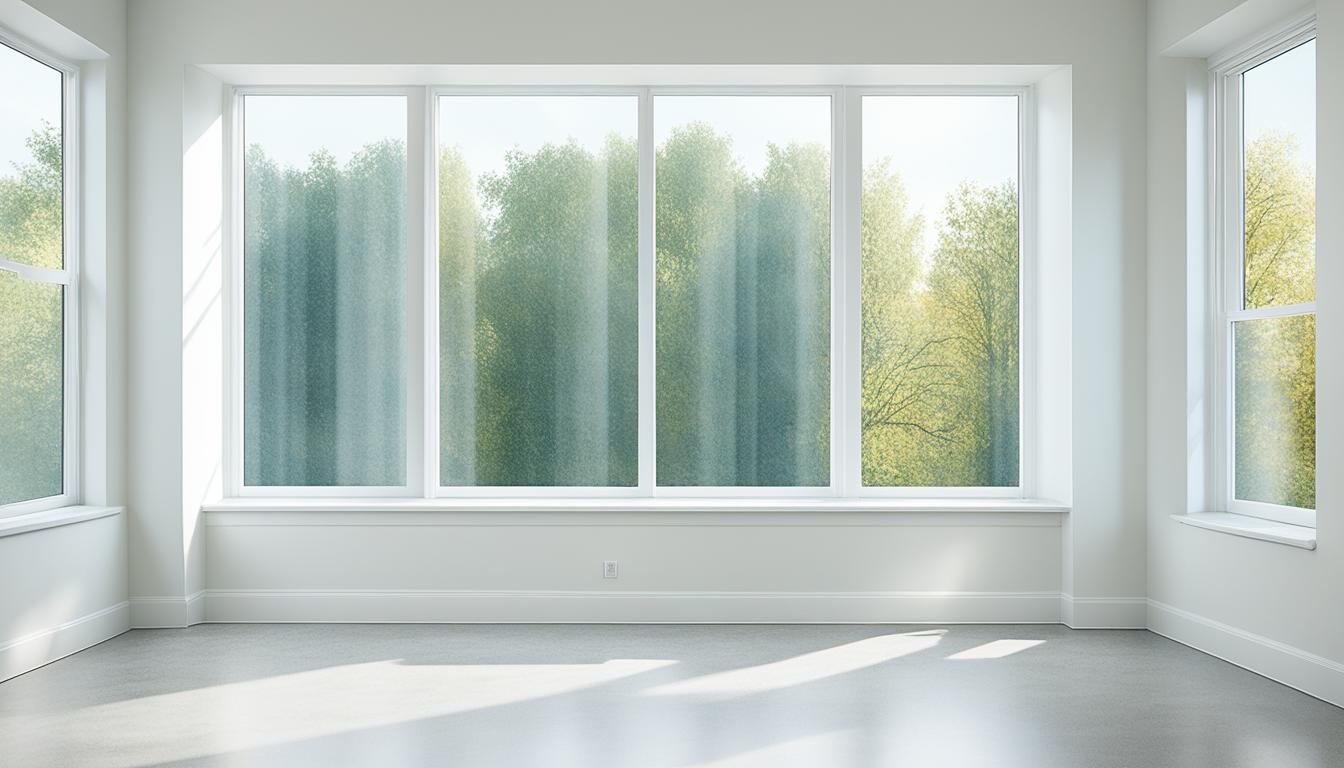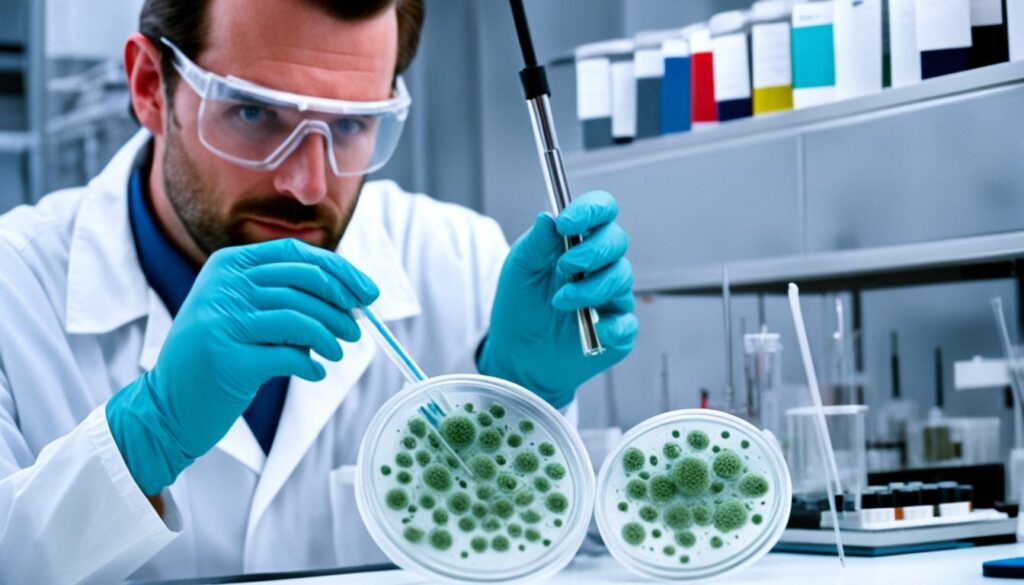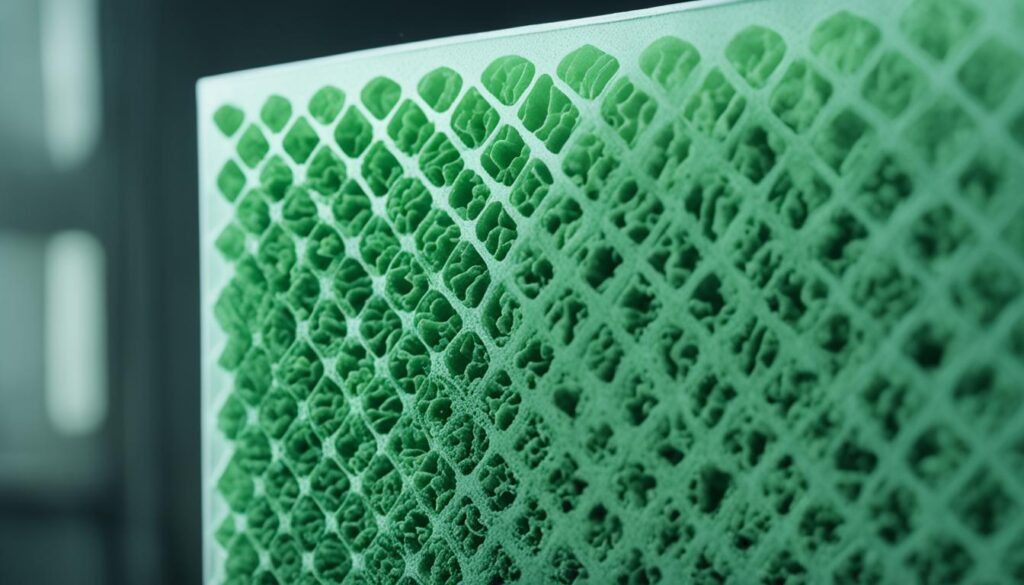
Assessing Normal Airborne Mold Levels in Homes
In this section, we will explore the topic of airborne mold levels in homes and how to determine if the mold present is within normal limits for indoor air quality assessment. Many homeowners may wonder, “Is this a normal amount of mold to collect from the air?” It’s essential to understand what constitutes acceptable mold levels in residential settings to ensure a healthy living environment.
Mold is a common occurrence in homes and can have a significant impact on indoor air quality. While some mold presence is unavoidable, especially in humid climates, excessive mold growth can be detrimental to both the health of the occupants and the structural integrity of the property. By assessing and monitoring mold levels, homeowners can take necessary steps to address any issues and maintain a safe and comfortable living space.
Key Takeaways:
- Understanding normal airborne mold levels is crucial for maintaining a healthy indoor environment.
- Excessive mold contamination can impact both human health and the integrity of the property.
- Regular assessment and monitoring of mold levels can help identify and address potential issues.
- Indoor air quality assessments are essential for ensuring a safe living space.
- By taking necessary steps to address mold-related concerns, homeowners can prevent further damage and potential health risks.
Understanding Mold Testing Procedures
When it comes to assessing the presence of mold in the air, various testing procedures are employed. These procedures aim to provide a comprehensive understanding of mold levels and its impact on indoor air quality. In this section, we will explore the methods and techniques used for mold testing, including mold in air sampling, mold spore analysis, and environmental mold testing.

“Mold testing procedures play a crucial role in identifying the type and concentration of mold spores present in the air,” explains Dr. Rachel Johnson, a leading expert in indoor air quality assessment. “This information helps in determining whether mold levels are within acceptable limits and allows for informed decision-making regarding remediation measures.”
One of the primary methods used in mold testing is mold in air sampling. This involves collecting air samples from different areas of the property to measure the concentration of mold spores present. The samples can be collected using various techniques, such as air pumps or spore traps, depending on the specific requirements of the assessment.
Once the air samples have been collected, mold spore analysis is conducted to identify the types of mold present and their quantity. This analysis is performed in a laboratory setting by trained professionals who specialize in analyzing mold samples. The results of mold spore analysis provide valuable insights into the potential health risks associated with the mold species identified.
Environmental mold testing goes beyond measuring the concentration of mold spores in the air. It involves assessing other environmental factors, such as humidity levels, temperature, and moisture content, which can contribute to mold growth. These factors are critical in understanding the underlying conditions that support mold proliferation.
Benefits of Mold Testing Procedures
Mold testing procedures offer several benefits, including:
- Identification of mold species and their potential health effects
- Evaluation of mold levels in comparison to established guidelines
- Insights into the contributing factors for mold growth
- Validation of remediation efforts and effectiveness
By understanding the mold testing procedures and their significance, homeowners and property managers can make informed decisions regarding mold remediation and ensuring a safe and healthy indoor environment.
Guidelines for Mold Inspection and Detection
When it comes to maintaining a healthy indoor environment, it is essential to follow proper guidelines for mold inspection and detection. By identifying potential mold issues and taking necessary steps to address them, you can ensure a safe living space for you and your family. In this section, we will discuss the best practices to follow when conducting mold inspections and detecting airborne mold in homes.
Common Areas Prone to Mold Growth
Before conducting a mold inspection, it’s crucial to understand the common areas where mold growth is often found. These areas include:
- Bathrooms: Due to the high levels of moisture and inadequate ventilation, bathrooms are a common breeding ground for mold.
- Kitchens: Leaking pipes, food spills, and insufficient ventilation can contribute to mold growth in kitchens.
- Basements: Poor moisture control and lack of natural light make basements susceptible to mold growth.
- Attics: Improper insulation, roof leaks, and inadequate ventilation can lead to mold issues in attics.
- Crawl Spaces: Damp and poorly ventilated crawl spaces create an ideal environment for mold.
By paying close attention to these areas during a mold inspection, you can increase the likelihood of detecting any mold problems.
Tips for Identifying Mold Issues
During a mold inspection, it’s important to be observant and look for signs that indicate the presence of mold. Here are some tips for identifying mold issues:
- Visible Mold: Look for signs of visible mold growth, such as discoloration or patches on surfaces.
- Musty Odor: Mold often produces a distinct musty odor. If you notice a persistent musty smell, it could indicate mold growth.
- Water Damage: Any areas with water damage, such as leaks, stains, or watermarks, are more likely to harbor mold.
- Increased Allergies or Respiratory Issues: If you or your family members experience allergies or respiratory problems that seem to worsen indoors, it could be a result of mold exposure.
By following these guidelines and being vigilant during a mold inspection, you can detect potential mold issues before they escalate and take appropriate steps for remediation.
| Benefits of Mold Inspection and Detection | Importance of Fixing Mold Issues |
|---|---|
|
|
To further understand the benefits and importance of mold inspection and detection, let’s take a closer look at the table above.
Benefits and Importance of Mold Inspection and Detection
| Benefits | Importance |
|---|---|
|
|
As shown in the table, mold inspection and detection offer numerous benefits, ranging from ensuring a healthy indoor environment to preventing property damage. By addressing mold issues promptly, you can protect your health, preserve the structural integrity of your home, and maintain a clean and safe living space.

Assessing Mold Levels and Remediation Recommendations
In order to maintain a healthy indoor environment, it is essential to assess mold levels in the air and take appropriate remediation measures if necessary. Mold can negatively impact indoor air quality and pose health risks to occupants, making it crucial to address any mold issues promptly.
When assessing mold levels, it is important to adhere to industry standards and guidelines. One commonly used method is conducting air sampling, which involves collecting air samples from different areas of the property to measure the concentration of mold spores present in the environment.
Importance of Mold Remediation Recommendations
Based on the results of the mold assessment, recommendations for mold remediation should be provided. These recommendations are crucial for identifying the severity of the mold problem and determining the necessary steps to mitigate it effectively.
Mold remediation recommendations may include:
- Identifying and addressing the source of moisture or water intrusion that is contributing to mold growth.
- Removal and cleaning of mold-contaminated materials, such as drywall, carpeting, or insulation.
- Proper containment and disposal of mold-infested materials following industry best practices.
- Implementing appropriate ventilation and dehumidification measures to prevent future mold growth.
- Conducting follow-up inspections and testing to ensure the effectiveness of the remediation process.
It’s important to note that mold remediation should be performed by trained professionals who have experience in handling mold-related issues. Attempting to remove mold without proper knowledge and equipment can lead to further contamination and potential health hazards.
“Proper mold remediation requires a thorough understanding of mold growth and the necessary precautions to protect both the occupants and the remediation professionals. It is always recommended to consult with experienced mold remediation specialists for effective and safe mold removal.”
– Dr. Emily Johnson, Indoor Air Quality Expert
By following the recommended mold remediation measures, you can ensure that your indoor air quality is improved and maintained at healthy levels. Remember that the goal is not only to remove visible mold but also to address underlying moisture issues to prevent future mold growth.
Next, we will wrap up our discussion with a summary of the key points and contact information for Fix Mold Miami, a trusted provider of professional mold assessments and remediation services in Florida.
Conclusion
In conclusion, maintaining a healthy indoor environment requires understanding normal airborne mold levels in homes. If you suspect mold issues or require a professional mold assessment, contact Fix Mold Miami at 305-465-6653. Their experienced team specializes in mold assessments, prevention, and remediation in Florida.
By addressing any mold-related concerns promptly, you can ensure the air you breathe is free from excessive mold contamination. Fix Mold Miami offers comprehensive services to help you identify and eliminate mold issues, safeguarding the well-being of your home and its occupants.
With their expertise and state-of-the-art equipment, Fix Mold Miami is committed to providing accurate mold assessments and recommending appropriate remediation measures. Don’t compromise your indoor air quality; trust the professionals at Fix Mold Miami to deliver effective solutions and peace of mind.




